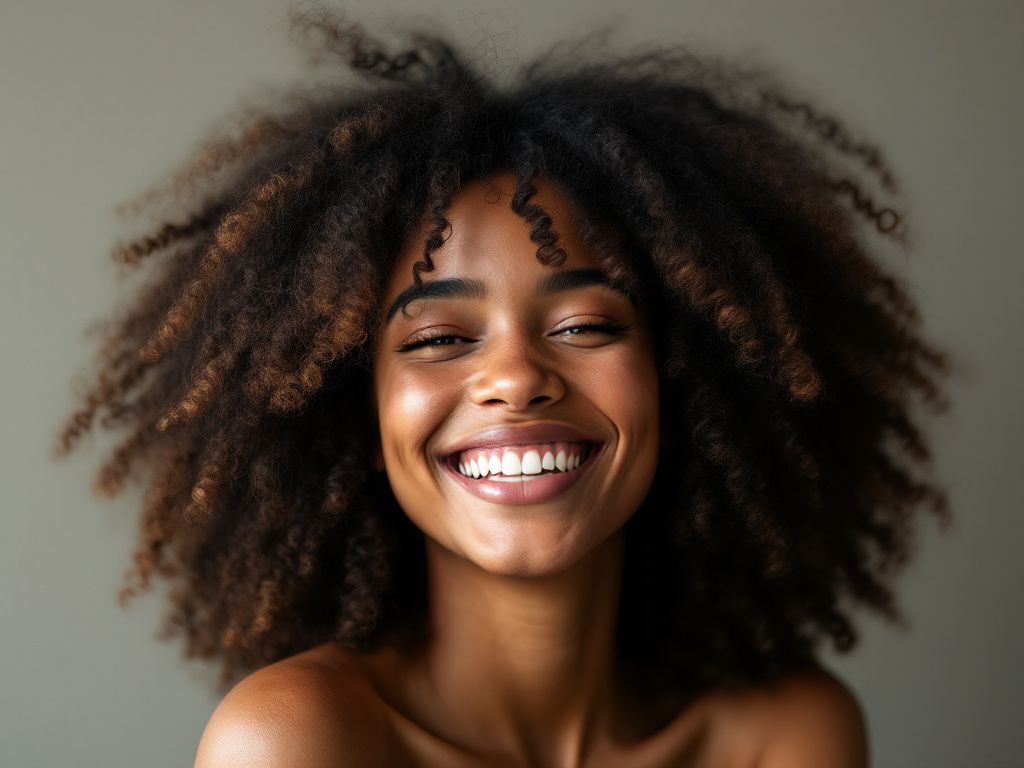
Navigating the world of hair textures can be as complex as it is personal. From the thrill of trying new products to the vulnerability of confronting one’s hair insecurities, understanding the science and art of hair is empowering. Welcome to our comprehensive Q&A guide, where we dive deep into texture transitions and insecurities, supplying you with verifiable facts and expert advice you can trust.
In this compilation, we combine technical know-how with personal insights. If you’ve ever found yourself overwhelmed by the multitude of curly hair questions, or if you’ve faced curl problems that left you stumped, this guide is your starting point for enlightened hair advice. Let’s journey together into the nuanced world textures.
What Are Texture Transitions and Why Are They Important?
Transitioning hair texture, often referred to as “going natural,” involves moving away from chemically treated hair to embrace its natural state. Transitioning matters because it not only revitalizes your hair but also empowers individual identity and self-acceptance.
Technical Breakdown
- Chemical Versus Natural: Chemically treated hair often involves relaxers, which break down disulfide bonds that determine hair’s curl pattern. Transitioning requires allowing these bonds time to revert to their natural state—a process that can take anywhere from months to years depending on growth rates and prior length of treated hair.
- Health Benefits: Chemicals in relaxers can weaken hair integrity over time. Transitioning reduces exposure to these harsh chemicals, enhancing hair strength and shine. A study published in the Journal of Cosmetic Science confirmed that transitioning from chemical to natural styling results in improved hair tensile strength.
- Social Impact: Embracing natural texture is more than a personal journey; it can be a statement against societal beauty norms that often prioritize certain hair types over others.
Examples and Real-World Applications

- Jennifer’s Story: After years of chemically treating her curls, Jennifer decided to transition. Through extensive research and a consistent care regimen, she now enjoys healthier, shinier hair and remains a strong advocate for natural beauty in her community.
- Industry Standards: Per the standards established by the Natural Hair Movement Consortium, creating a structured transition plan with realistic timelines and product swaps is crucial for a smooth transition. This involves phases like preliminary trimming and intense moisturizing to handle the dual textures effectively.
How Can I Manage Curl Problems During My Transition Phase?
Managing curl problems during texture transitions requires attention to detail and a great deal of patience. Your hair may act unpredictably as it adjusts, resulting in a myriad of curl problems.
Expert Analysis and Practical Tips
- Understanding Curl Patterns: Every hair type—from 2A to 4C—comes with its sets of challenges and needs, necessitating different product support and care strategies. Knowing your specific hair type and porosity will guide you in product selection and styling techniques.
- Moisturization: As you transition, dryness and frizz can mount problems. A 2020 study from the International Journal of Trichology emphasized the importance of humectants, such as glycerin and honey, in drawing moisture from the environment into the hair shaft.
- Protective Styling: Styles such as braids and twists minimize daily manipulation, reducing damage and giving hair time to recover.
Actionable Advice
- Custom Cocktails: Experiment with a combination of leave-in conditioners, oils, and stylers suited for your hair’s porosity. Track your progress to see what works best.
- Key Products: Invest in a microfiber towel for reducing frizz and a satin pillowcase to maintain moisture overnight.
- Schedule Regular Trims: Eliminating damaged ends over time helps restore uniformity and prevent breakage.
What Role Do Insecurities Play During a Texture Transition?

Hair insecurities can be amplified during transitions, but recognizing them can be a crucial step in combating them.
Case Studies and Perspectives
- Empowerment through Awareness: Participating in community groups and forums can sharpen your transition knowledge and ease insecurities as people share similar journeys.
- Mental Health Component: Studies, such as one conducted by Stanford University, illuminate the link between hair acceptance and personal confidence. Being patient and mindful during this journey supports both self-esteem and a healthier mindset.
- Professional Insights: Hairstylists often see clients who underestimate their natural beauty due to proliferating beauty standards. Encouragement and education have assisted many in overcoming this hurdle to embrace their true selves.
Best Practices and Recommendations
- Affirmative Journaling: Document your hair journey, and include positive affirmations that challenge negative self-talk and cultivate self-love.
- Seek A Supportive Professional: Hairstylists and tricologists with expertise in curly hair can offer guidance and encouragement, making sure you maximize your hair potential.
- Visibility Matters: Following advocates on social media who champion natural styles can offer inspiration and validation.
What Research Supports Transitioning to Natural Hair?

A body of scientific research propounds the plausibility of successful texture transitions emphasizing health. According to studies from the National Center for Biotechnology Information (NCBI), natural hair products and routines show a statistically significant improvement over time across metrics such as shine, strength, and moisture retention.
Research Findings and Industry Data
- Retention and Growth: A peer-reviewed study confirmed that individuals who opted for natural oils, such as coconut and olive, experienced less hair protein loss compared to those using commercially processed oils.
- Cultural Significance: Historical and sociological analysis from the Harvard Gazette reveals a pattern of cyclical developments in hair trends reflecting deeper cultural meanings and identity struggles.
- Product Development: Continuous innovation in the formulation of curl-specific products fuels a demand for research-backed solutions that cater effectively to the nuances of naturally curly, kinky, or coily hair.
Conclusion
In rounding off our Q&A compilation, it’s crucial to acknowledge the value of embarking on a journey toward embracing your natural hair texture. From answering curly hair questions to discussing the emotional dimensions governing hair insecurities, we covered multifaceted topics grounded in authoritative insights and research.
This collection isn’t just about problems and solutions; it offers a framework for accepting where you are and dreaming where your natural journey could ultimately lead. Armed with knowledge, practice, and a supportive community, you’re well-equipped to champion your authentic self. Let’s embrace texture transitions while eradicating insecurities, one curl at a time. 🚀
For more personalized assistance and an in-depth discussion on your unique hair journey, consider connecting with hair care professionals or becoming part of forums and networks that foster inclusive and supportive environments. Know that the trip back to one’s natural roots is as personal as it is collective—a remarkable journey well worth taking.
Frequently Asked Questions
What are the benefits of using a hair mask in my hair care routine?
Using a hair mask can provide several benefits, including hydration, smoothing, strengthening, curl definition, heat protection, and damage repair. Hair masks infuse the hair with moisture, help coat the hair shaft to seal split ends, reduce breakage, and protect the hair from heat styling and environmental damage[1][4].
What ingredients should I look for in a hair mask?
Effective hair masks often include ingredients such as coconut oil, argan oil, shea butter, honey, avocado oil, green tea, and coconut water. These ingredients provide nourishment, moisturize, and protect the hair, offering benefits like softening, moisturizing, and protecting against damage[2][5].
How often should I use a hair mask in my routine?
You should use a hair mask whenever your hair feels dry, unmanageable, or in need of intense hydration. This can vary depending on your hair type and needs, but generally, using a hair mask once or twice a week can help maintain healthy and moisturized hair[1][4].
How do I apply a hair mask for the best results?
To apply a hair mask effectively, shampoo your hair first, then apply the mask, focusing especially on the ends where hair tends to be the most damaged. Leave the mask on for anywhere from 10 minutes to overnight, depending on the type of mask and your hair’s needs[1][4].
References


Leave a Reply